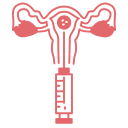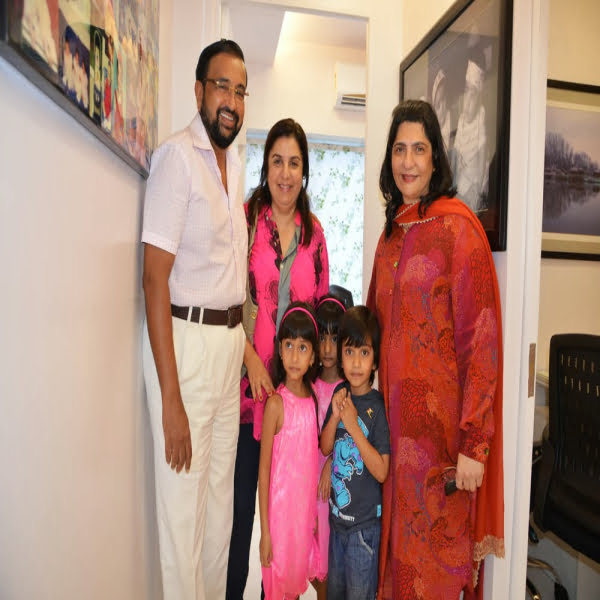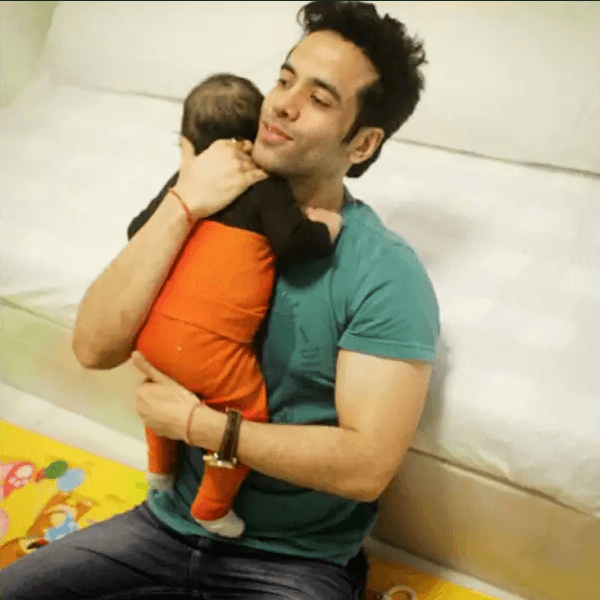
We have put a smile on 40,000+ faces by helping them become parents in the last 34 years.

We have a success rate ranging as high as 15% to 25% depending on the indication for IUI.

The success of our pregnancy rates ranges from 38-42% per cycle and 47-51% per couple.

We have won multiple accolades, including being Rated the No. 1 IVF centre in Mumbai by trusted publishers like The Times Of India & The Economic Times in multiple surveys.
About Dr. Firuza Parikh
Director of Jaslok-FertilTree International Fertility Centre, Jaslok Hospital, Mumbai, India.
Dr. Firuza Parikh is the Director of Jaslok-FertilTree International Fertility Centre at the Department of Assisted Reproduction and Genetics at Jaslok Hospital and Research Centre, Mumbai, India. She completed her undergraduate and postgraduate medical education at KEM Hospital, Seth G. S. Medical College, and Nowrosjee Wadia Maternity Hospital, all located in Mumbai, India. She earned several gold medals and first ranks in college. After acquiring her MD and Diplomate of the National Board degrees, she trained in IVF and Reproductive Endocrinology at Yale University School of Medicine in the United States under the mentorship of Dr. Alan DeCherney.
Medical Qualifications: M.D., D.G.O., D.F.P., F.C.P.S., Dip.N.B.E., PhD
Medical Qualifications: M.D. (Doctor of Medicine), D.G.O. (Diploma in Gynecology and Obstetrics), D.F.P. (Diploma in Family Planning), F.C.P.S. (Fellow of the College of Physicians and Surgeons), Dip.N.B.E. (Diplomate of the National Board of Examinations), PhD (Doctor of Philosophy)
Designation: Director of Jaslok-FertilTree International Fertility Centre, Jaslok Hospital, Mumbai, India.
Subspecialty: Reproductive Medicine and IVF
Years of Experience: 38 Years in Reproductive MEdicine and IVF and 41 years in Obstetrics and Gynaecology.
Area of expertise: Specialization in various aspects of ART, including In-Vitro Fertilization (IVF), Intracytoplasmic Sperm Injection (ICSI), Egg & Embryo Freezing, Sperm and Testicular Sperm Freezing, Ovarian Cortex Freezing, Donor Eggs, Surrogacy, Male Factor Infertility. Preimplantation Genetic Testing, Genetics, High Risk Pregnancy, Repeated Miscarriages, Repeated Implantation Failure, Autoimmune conditions in Reproductive Medicines.
Contact Details: [email protected] and +91-22-66573175 or Dilnavaz at 9920842070
Dr. Parikh has over 38 years of experience in her field, and her work has helped countless couples overcome fertility issues and build their families. She is widely respected for her knowledge and expertise and continues to be a leading voice in the world of Reproductive Medicine.
With a distinguished career, Dr. Firuza Parikh is a recipient of ICON in IVF in India 2019 and 2022 by Economic Times Healthcare Awards.
She is a renowned name in the field of IVF, and her work has helped countless couples achieve their dream of starting a family. In 1989, she returned to India to set up the first IVF centre in a private hospital at the Jaslok Hospital located at Mumbai. The Centre quickly gained a reputation as an outstanding international centre, receiving patients from all over the world. Keeping up to date with the recent upcoming technology and realising the need for genetic testing for the couples with fertility issues, she started the Genetics Laboratory as a part of the IVF Centre in 1999 at Jaslok Hospital, Mumbai which was equipped with karyotyping and Fluorescence in situ hybridization (FISH) techniques on a variety of tissues. To date, couples from 60 countries have availed of our services. Dr. Parikh’s work has transformed the lives of many families. Recently her team delivered their 20,000th baby. Dr. Firuza Parikh is a former Visiting Professor in Obstetrics and Gynaecology at the Yale University School of Medicine, New Haven, USA (1992-2005). She was awarded the Ph.D. for the work done on chromosomal aneuploidy detection in arrested and slowly cleaving embryos. She is a Guide for Ph.D. and M.Sc. by Research for Mumbai University in the field of Applied Biology. She is also The Editor-in-Chief of the scientific journal Fertility and Sterility Indian edition and a member of the Editorial Board of the scientific journal Fertility and Sterility (USA) and Fertility & Sterility Science (USA).
Dr. Firuza Parikh has helped many couples, including celebrities, become parents




awards won by dr. firuza parikh
- 2022: Jaslok Ratna for excellent work done in IVF field, Jaslok foundation day award ceremony, July 2022.
- 2022: One of the top Reviewer for Fertility & Sterility Science (USA).
- 2022: World Zarathushti Community Awards: Science, Technology, Engineering, Medicine Award for outstanding and extraordinary professional achievement in the field of medicine and forging new opportunities for future generations. July 2022.
- 2022: Mid-Day International Health and Wellness Icon, The Dubai Episode Season 2, for Best International IVF Centre in Asia (International), June 2022.
- 2022: ET Healthcare Fertility Award for IVF Icon (National), February 2022.
- 2021: Champion of ISPAT (Indian Soceity for Prenatal Diagnosis and Therapy) Award. 2021
- 2021: Guardian of Health Awards by Integrated Health & Wellbeing Council. July 2021
- 2021: First in Western India and Mumbai and second in India as Best IVF Centre in the Times of India Survey. 2020-2021.
- 2019: First in India, Western Zone and Mumbai as Best IVF Centre in the Times of India Survey 2019-2020.
- 2019: Felicitated by Indian Fertility Society for Lifetime Achievement Award, December 2019.
- 2019: Icon in IVF, Best IVF Centre and Most integrated IVF Team by ET Healthcare Fertility Award 2019.
- 2019: Awarded Society Pride of India Honors by Magna Publication Group November 2019.
- 2019: The Hello Award for excellence in Medicine March 2019.
- 2018: Inspirational Women of Maharashtra – Women Achiever’s Awards 2018 (Presented by Herald Global) May 2018.
- 2018: Times HealthCare Legend Award by Times of India May 2018
- 2018: First in India, Western Zone and Mumbai as Best IVF Centre in the Times of India Survey 2018-2019.
- 2017: First in India, Western Zone and Mumbai as Best IVF Centre in the Times of India Survey 2017-2018.
- 2017: Lifetime Achievement Award (ISAR 2017, Gurgaon).
- 2017: 20 years Scientific Milestones Award by American Society for Reproductive Medicine (ASRM 2017)
- 2017: Zoroastrian Achievers Awards Nite 2017 (ZAAN 2017) Award for Outstanding Zoroastrian in the field of Medicine by Zoroastrian Trust Funds Of India (ZTFI) 10th November 2017.
- 2016: First in India, Western Zone and Mumbai as Best IVF Centre in the Times of India Survey 2016-2017.
- 2016: Selected as one of India’s Most Powerful Women (Infertility Specialist) by Femina magazine in August 2016.
- 2015: The 100 Most Powerful Women of Asia Award 2015 by WCRC (World Consulting and Research Corporation).
- 2014: Selected as Woman of the Year 2014 by Limca Book of Records.
- 2012: L’Oreal Paris Femina Women Awards 2012 for Science and Innovation.
- 2012: Women in the Driving Seat Award by Lavasa Women’s Drive for Science and Medicine
- 2011: Selected as one of the 10 most influential women of the year 2010 by Femina magazine.
- 2009: FICCI FLO Women Achievers Awards 2009 "Excellence in the field of Medicine"
- 2007: Selected as 1 of the 50 most powerful Indian women by Femina Magazine
- 2007: Hindustan Times Woman of the Year Award
- 2006: Woman of the Year Award – Zonta International Organization.
- 2006: Zee Astitva Award for Science and Technology.
- 2005: Selected as one of the 50 individuals in the "High & Mighty Power List 2005" in India Today.
- 2005: Selected by "OUTLOOK" magazine as one of the top 15 women in India who were role models for others.
-
2002: Kuvadia-Shah-Vora Oration Award on Stem Cell
Therapy – Implications & Importance, by The Bombay Medical Association. - 2001: The M.D. Adatia Oration Award – Bombay Obstetrics and Gynecology Society Annual Conference.
- 2001: Felicitation by Organisation of Pharmaceutical Producers of India for outstanding research in Stem Cells.
- 2001: Listed by the National Institutes of Health registry (USA) for research in Embryonic Stem Cells
- 1995: Outstanding Young Indian Award is given by the Indian Junior Chamber.
- 1995: The All India Ratna Shiromani Award for pioneering work in the field of Obstetrics and Gynaecology.
media coverage
Israel-based Embryonics collaborates with Jaslok-FertilTree International Fertility Centre
Our IVF centre in Mumbai was ranked 1st in Western India and Mumbai in a survey conducted by the i3 Research Consultants of the Times of India
Our IVF centre in Mumbai was ranked First in All India “Times-Top IVF & Fertility Centres in India Ranking Survey – 2020” at National Level for the fourth consecutive year.
First pregnancy in India for Reciprocal Translocation by PGD
First pregnancy in India for Robertsonian Translocation by PGD
Dr. Firuza Parikh has been selected by doctors and patients interviewed by The Week (May 6, 2007) as one of the pioneers in the field of IVF and Assisted Reproduction.
What Patients Say About Dr. Firuza Parikh
We truly wish the entire team all the very best, and thank them for all they are doing.
Dear Dr Firuza and team,
Thank you so much for the happiness you brought into our life with our son. I have lost all my faith in becoming mother after struggling for 8 years. Coming to your clinic is the best decision we made. Thank you so much for your warmth and care towards us. I still remember the day sitting in front of you crying and asking if I ever get to hold our baby and you assured me YOU WILL. Your knowledge in the Infertility world is extreme and all I can wish and pray for people who are struggling with infertility may find you soon. You are an ANGEL on earth who helps to fulfill the dream. Thank you so much
Blogs by Dr. firuza parikh
Contact Us
FAQs on Dr. Firuza Parikh: Best IVF Specialist in Mumbai
Where does Dr. Firuza.R. Parikh practice?
Dr. Firuza Parikh is currently the Director of Jaslok-FertilTree International Fertility Centre at the Department of Assisted Reproduction and Genetics at JASLOK HOSPITAL AND RESEARCH CENTRE Mumbai, India.
What do patients say about Dr. Firuza.R. Parikh?
Over the years, Dr. Firuza.R. Parikh has been strongly recommended by many of her patients. Most of her patients are referred by word of mouth and by referrals from other doctors.To know more about what her patients have to say, go to https://fertiltree.com/patient-diaries/. She has a 4.9 /5 star reviews of more than 626 reviews.
What is Dr. Firuza.R. Parikh's education qualification?
The following are some of the education qualifications that Dr. Firuza.R. Parikh holds:
- MBBS
- MD in Obstetrics & Gynaecology
- DGO (Diploma in Gynaecology and Obstetrics)
- FCPS in Midwifery & Gynaecology
- Diploma in Family Planning
- Dip. N B E (Diplomate of the National Board of Examinations)
- PhD (Doctor ate in Philosophy HEr area of research being REproductive Medicine and Genetics.
What does Dr. Firuza.R. Parikh specialize in?
Dr. Firuza.R. Parikh specializes in the fields of IVF, Genetics and Reproductive Medicine.
How many years of experience does Dr. Firuza.R. Parikh have?
Dr. Firuza.R. Parikh has a total of 41 years of experience.
Dr Firuza Parikh appointment/ How to make an appointment with Dr. Firuza.R. Parikh?
To consult Dr. Firuza.R. Parikh, you can call +91-22-66573175/+91 9920842070 or email [email protected].
What is Dr. Firuza Parikh's consulting fee?
The consultation fee is Rs. 3000.




